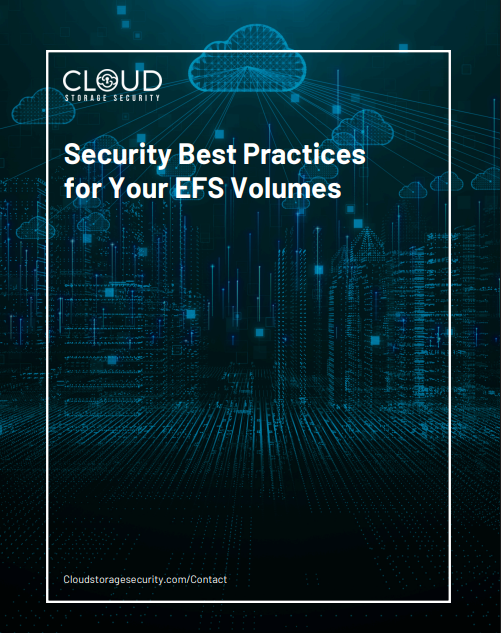Building a Strategy to Secure Your Cloud Storage
Mitigate risks and protect your business with Antivirus for AWS by Cloud Storage Security (CSS).
Security Best Practices for Your EFS Volumes
Secure your Amazon EFS volumes with our comprehensive whitepaper that details essential security best practices for protecting your cloud storage. Discover why robust encryption, precise access control, proactive malware scanning, and effective disaster recovery strategies are crucial to safeguarding your AWS environment. Learn how advanced visibility, proper tagging, and cross-platform security measures can mitigate risks, ensure compliance, and maintain the integrity of your data.

This paper discusses:
Discusses the implementation of proper visibility and asset management through tagging, AWS Config, and centralized monitoring to ensure all EFS resources are tracked and compliant.
Details best practices for mounting EFS volumes, including configuration of access points, IAM policies, and instance-level security to mitigate unauthorized access.
Outlines encryption strategies for both data at rest and in transit, emphasizing the need for explicit configuration and understanding common pitfalls.
Reviews disaster recovery measures and proactive malware scanning techniques, including automated backups and cross-region replication, to ensure rapid recovery and sustained data integrity.
Summarized Excerpt
In today’s cloud-centric landscape, protecting your Amazon EFS volumes requires more than basic preventive measures—it demands a proactive, multi-layered security strategy. This whitepaper provides deep insights into establishing complete visibility and control over your storage environment through meticulous resource tagging, centralized monitoring, and effective configuration management.
By implementing robust encryption protocols for both data at rest and in transit, alongside precise IAM policies and secure mount point configurations, the guide emphasizes the importance of mitigating unauthorized access and maintaining data integrity.
The document also delves into disaster recovery and proactive threat detection methods, highlighting the value of automated backups, cross-region replication, and continuous malware scanning to ensure rapid recovery and sustained business continuity.
Beyond initial security measures, the paper underscores the necessity for ongoing monitoring and incident response, equipping organizations with strategies to swiftly isolate, remediate, and learn from security events—ultimately enabling a resilient and secure cloud storage posture.
-4.png?width=200&height=130&name=Untitled%20design%20(2)-4.png)